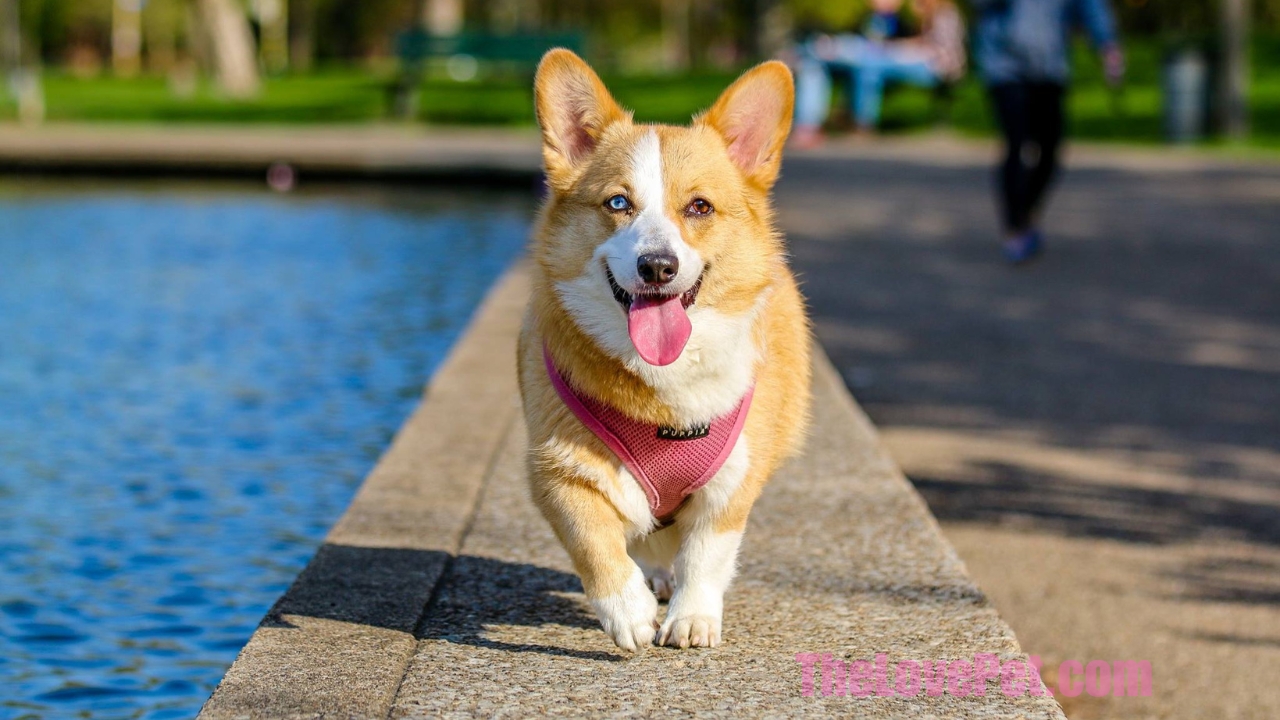Pet insurance is a type of insurance policy that helps pet owners pay for veterinary care for their pets. It works similarly to health insurance for humans, covering a portion of costs for services like veterinary exams, vaccinations, medications, surgeries, and more.
How Does Pet Insurance Work?
Pet insurance plans require you to pay a monthly premium. Then, when you take your pet to the vet, you pay the full cost upfront. Afterward, you can submit a claim to get reimbursed for a portion of those costs. Plans have an annual deductible you must meet first before coverage kicks in.
Types of Pet Insurance Plans
Accident and Illness Plans
These plans cover both accidents/injuries and common illnesses. They tend to be the most comprehensive but also the most expensive options.
Accident Only Plans
These plans cover only injuries and accidents, not illnesses. They tend to have lower premiums but less coverage.
Wellness Plans
Wellness plans cover the costs of routine vet services like vaccinations, checkups, dental cleanings, etc. They provide preventative care coverage only.
What’s the Best Pet Insurance?
The “best” pet insurance depends on your needs and budget. Look for a reputable provider like ASPCA, PetPlan, or Healthy Paws. Make sure to understand policy details like coverage limits, exclusions, and reimbursement rates. Prioritize comprehensive accident and illness coverage for the most protection.
Here is some additional information to expand on the main points about pet insurance using h3 and h4 tags:
Comparing Pet Insurance Providers
Coverage
Compare coverage offerings between providers. Some offer more limited accident-only plans while others provide comprehensive accident and illness plans.
Reimbursement Percentages
Plans reimburse a percentage of your vet bills, usually 70-90%. Higher reimbursement percentages reduce your out-of-pocket costs.
Annual Limits
Most plans have annual coverage limits per condition or overall. Higher limits provide more coverage but cost more.
Exclusions
Review exclusions like pre-existing conditions which may not be covered by all providers.
Is Pet Insurance Worth It?
For most pet owners, the peace of mind and financial protection pet insurance provides makes it worth the cost. It can prevent huge vet bills from becoming a financial burden. But research plans thoroughly to find the right fit.
#FAQ #Update #AdditionalContent
1. What are the key features of Paw Protect’s pet insurance plan?
2. Why was Embrace’s pet insurance plan rated 5 stars in evaluation?
3. Which pet insurance plan offers coverage for senior cats and dogs with no extended waiting period for specific conditions?
4. What are the common exclusions found in a pet insurance policy?
5. How do waiting periods work in pet insurance, and what is an example of a waiting period for accident coverage?
Paw Protect
Maximum annual coverage: $5,000, $10,000, Unlimited
Reimbursement choices
Deductible choices
Why We Picked It:
Paw Protect’s pet insurance plan has the same features and rates as Embrace’s plan, which is rated 5 stars in our evaluation. But Paw Protect also provides policyholders with a $2,000 line of credit to cover veterinarian bills with no fees, interest charges or credit checks. You can use this line of credit when you pay a vet bill so that you don’t have to pay the full vet bill up front and then wait for insurance reimbursement.
Embrace
Maximum annual coverage: $5,000, $10,000, Unlimited
Reimbursement choices
Deductible choices
Why We Picked It:
Embrace’s pet insurance plan earned the highest score for coverage benefits among the plans we evaluated. This plan covers vet exam fees and access to a 24/7 pet health line. The 6-month waiting period for orthopedic conditions can be waived if your vet does an orthopedic exam after you purchase the policy.
Spot
Maximum annual coverage: $2,500, $3,000, $4,000, $5,000, $7,000, $10,000, $15,000, $20,000, Unlimited
Reimbursement choices
Deductible choices: $100, $250, $500, $750, $1,000
Why We Picked It:
Spot gives you lots of ways to adjust your benefits levels so that you can fit pet insurance into your budget. Note that this is the same plan offered by ASPCA but with different choices for annual limits and deductibles.
ManyPets
Maximum annual coverage
Reimbursement choices: 70% or 80% (in most states)
Deductible choices
Why We Picked It:
ManyPets offers some unique and valuable coverage features, such as reducing the accident and illness waiting period to 24 hours if you switch over from another pet insurance company. It also has very competitive pricing that makes it worth a look if it’s available in your state.
Pumpkin
Maximum annual coverage: $10,000, $20,000, Unlimited
Reimbursement choices
Deductible choices
Why We Picked It:
Pumpkin has a good selection of coverage options for a wide range of pet problems and medical expenses, including vet exam fees, surgeries, and dental illnesses. There is no extended waiting period for problems such as cruciate ligament issues or hip dysplasia.
Figo
Maximum annual coverage: $5,000, $10,000, Unlimited
Reimbursement choices
Deductible choices
Why We Picked It:
Figo’s wide variety of options for coverage, reimbursement, and deductible can help you work within your budget. It has a short 1-day waiting period for accident coverage.
Lemonade
Maximum annual coverage: $5,000, $10,000, $20,000, $50,000, $100,000
Reimbursement choices
Deductible choices
Why We Picked It:
If you want pet insurance at a low monthly cost, Lemonade is worth considering thanks to its competitive rates. It also boasts the lowest pet insurance rates for puppies and kittens among the companies we analyzed. You’ll give up some things like a 24/7 vet helpline, and coverage of the vet visit fee is available only with an add-on.
Pets Best
Maximum annual coverage
Reimbursement choices
Deductible choices: $50, $100, $200, $250, $500, $1,000
Why We Picked It:
Pets Best combines great coverage with a good price. Its wide range of deductible choices helps you budget for possible claims.
Trupanion
Maximum annual coverage
Reimbursement choices
Deductible choices
Why We Picked It:
Trupanion pet insurance offers unlimited annual coverage, no deductible, and flexible reimbursement options to help work within your budget. It also pays your vet directly (if your vet has Trupanion’s software), but the plan lacks options other insurers offer, such as wellness coverage and a 24/7 pet health line.
Summary: Pet Insurance Ratings
Reimbursement and deductible choices may vary by state.
What Is Pet Insurance?
Pet insurance is a health insurance policy for your pet that pays for medical expenses and sometimes other costs. Pet insurance plans are typically reimbursement-based, meaning you pay up-front for the pet’s vet bills and submit a claim to the insurance company. A few companies can, which helps keep your out-of-pocket payments low. There’s usually a deductible before coverage starts. For example, you might pay the first $500 in vet bills before the pet insurance starts to pay. Even after you pay your deductible, the pet insurance may not pay 100% of vet bills. You can typically choose your reimbursement level. Common reimbursement options are 70%, 80%, or 90% of your vet bills.
What Does Pet Insurance Cover?
What pet insurance covers will depend on the type of plan you buy. Pet insurance plans are generally available in three varieties:
1. Accident and illness plans generally cover injury or sickness such as broken bones, cancer, hereditary conditions, and congenital conditions, and more.
2. Accident-only plans cover only accident-related problems, like a broken bone.
3. You can add a routine wellness plan to many pet insurance policies. This will offset the cost of the annual vet wellness visit, vaccinations, heartworm treatment, and other routine care costs that help keep your pet healthy.
Pet insurance may not cover pre-existing conditions, meaning conditions your pet had before the policy went into effect, including any waiting period. Ask whether there’s a look-back period so that conditions before the look-back period can be covered.
What Doesn’t Pet Insurance Cover?
Here are some common exclusions typically found in a pet insurance policy:
1. Your policy might also require you to maintain the level of recommended care from your veterinarian. For example, if your vet recommends a dental cleaning due to dental issues for your pet and you fail to do so, you might not be covered for subsequent vet expenses related to dental illness.
How Does Pet Health Insurance Work?
If you have a pet insurance plan, you’ll generally have a deductible amount that you pay for veterinarian bills before coverage starts. After that, you’ll still pay your vet directly and then submit your bills to the pet insurer for reimbursement. The insurance company will send you reimbursement until it has paid the maximum your plan allows in a year, such as $5,000. Some plans offer unlimited payout maximums. Check the plan documents for any limitations to what’s covered, such as:
1. Exclusions
Your policy will have a list of exclusions. Common exclusions include grooming, breeding costs, certain pre-existing conditions, and expenses not related to veterinary care (such as taxes or your vet’s administrative fees).
2. Waiting
Periods
All pet insurance plans have waiting periods. Your coverage won’t kick in until the waiting period is over. For example, your policy might have a 14-day waiting period before it covers accident-related veterinarian costs.
3. Veterinarian Restrictions
Generally, pet insurance does not have network restrictions, and most insurers will cover any licensed vet. Check to see if your policy has any geographic restrictions or if your coverage is extended to other regions. For example, we analyzed a Trupanion pet insurance policy that covers licensed veterinarians in the U.S., Australia, Canada, Puerto Rico, and any other region under Australian, Canadian, or U.S. government control (such as a military base in a foreign country).
How to Find the Best Pet Insurance For You
Pet insurance plans can be hard to compare in an apples-to-apples way. Coverage, exclusions, and pricing variations make it hard to calculate the potential value of each plan. Here’s how to find the best pet insurance for you.
Choose the Best Pet Insurance Plan Type
Do you want a pet insurance that goes the extra mile every time, or do you want to hold down costs with an accident-only plan that won’t pay anything for pet illnesses? Or something in between? Comprehensive pet insurance plans that cover a wide range of health-related problems plus wellness are typically the most expensive, but it might be worth considering if you want complete coverage. Pet insurance can generally be broken down into these plan types:
Find the Coverage Level You’re Comfortable With
When you purchase a pet insurance policy, you’ll usually select an annual maximum, a deductible, and a reimbursement level.
Check the Pet Insurance Waiting Periods
A waiting period is the time between the policy purchase date and when the coverage begins. Every pet insurance company has waiting periods. Make sure you find one you’re comfortable with. For example, Embrace has a waiting period of only two days for accident coverage. Other plans, like ASPCA Pet Health Insurance, have 14 days. Also, be careful about special waiting periods for certain conditions, such as cruciate ligament issues. For example, Embrace has a six-month waiting period for orthopedic conditions for dogs but ASPCA’s plan does not have a waiting period for orthopedic conditions or any other specific issues.
Pet Insurance Discounts
Pet insurance discounts are a good way to save. Here are some common discounts:
Average Cost of Pet Insurance For Dogs
The average cost of pet insurance for a dog is $300 per year for $5,000 in annual coverage and $420 per year for unlimited coverage, according to a Forbes Advisor analysis of:
How Pet Insurance Costs Are Determined
The type of pet you insure is only one factor in determining your pet insurance costs. For example, the average cost of pet insurance for a dog is $44 per month and $30 per month for a cat, according to Forbes Advisor’s analysis. That’s based on a policy with $5,000 of annual coverage, a $250 deductible, and an 80% reimbursement level. Here are some other common factors that determine pet insurance costs.
Annual Maximum, Deductible and Reimbursement Level
These are the three main variables that determine how much reimbursement you’ll get if you file a pet insurance claim: annual maximum, deductible amount, and reimbursement percentage. Pet insurance will cost more if you choose a high annual maximum, low deductible, and/or high reimbursement level.
Pet’s Age
Younger pets are typically cheaper to insure than older pets. That’s because older pets are more likely to have.
#FAQ #Update #AdditionalContent
1. Who is ranked as the No. 1 pet insurer in Indiana for 2023?
2. What coverage-level options does Spot offer for pet insurance in Indiana?
3. Does Spot pet insurance cover preexisting conditions?
4. What factors can impact the cost of pet insurance in Indiana?
5. Which city in the U.S. is rated as the top city for dog owners, according to the text?
A pet insurance policy can help pet owners avoid potential financial hardship if their pet is injured or becomes ill. Many insurers also offer wellness coverage that can make caring for your pet’s long-term health more affordable. Indiana residents have many options when it comes to finding a policy that helps pay for the medical needs of their pets, whether those visits to the vet are planned or unexpected.
Key Points
What Is the Best Pet Insurance in Indiana?
Spot is the No. 1 insurer in our rating of the best pet insurance companies in Indiana. Lemonade is No. 2, while Trupanion and Embrace are tied for No. 3. Hoosier State residents who select Spot as their pet insurer can choose between coverage-level options ranging from $2,500 to $10,000. There are also Spot plans available that offer unlimited coverage. Some Spot plans cover accidents and illnesses, while some cover accidents only. Injuries resulting from an accident could include cuts, bites, or broken bones. Dog and cat illnesses that could require a veterinarian’s care include cancer. Other examples of illnesses cats encounter are immunodeficiency viruses and upper respiratory infections. Dog owners could find themselves faced with bills for treating thyroid disease, digestive problems, or ACL and hip displacement issues.
Like most insurance companies, Spot also provides pet owners with options for wellness care. It offers wellness plans in the form of two add-ons: The Gold Preventive Care package and the Platinum Preventive Care package. The Gold plan provides $250 in reimbursement, and the Platinum plan provides $450. Both plans cover dental cleanings, wellness exams, and other preventive treatments and procedures.
Spot policies involve a reimbursement process similar to that followed by most pet insurers. Pet owners take their pet to a licensed veterinarian, specialist, or clinic for care, then file a claim to be reimbursed by the insurer. Spot has an online claims process. Spot’s pet insurance policies cover dogs and cats. Nationwide, which is No. 7 in our rating, covers exotic pets, like birds and reptiles. ASPCA Pet Insurance, which is ranked eighth, sells policies that cover horses.
Is there a waiting period for Spot pet insurance?
Spot has a 14-day waiting period before coverage begins.
What does Spot pet insurance not cover?
Spot plans do not cover preexisting conditions, conditions that occur within the policy waiting period, or daycare/boarding. Wellness care is not included in Spot’s basic plans, but two levels of wellness coverage are available as add-ons, the Gold and Platinum plans.
How Much Does Pet Insurance Cost in Indiana?
Finding a pet insurance policy that suits the needs of your pet, and fits into your budget, should involve comparing rates from multiple insurers. Pet owners will discover during the process that in addition to location, their pet’s age is a factor that can impact premiums.
Our sample rates are based on the cost to insure a small, mixed-breed dog residing in Indianapolis. A policy that provides $5,000 in coverage costs, on average, $19.41 per month for a 2-year-old dog. A small, mixed-breed dog that is 6 years old would cost $31.51 per month to insure with a $5,000 limit. These sample premiums were determined using a policy with a $250 deductible and a 90% reimbursement rate.
Cat owners typically pay less to insure their pets than dog owners. Cat owners in Indianapolis will find their rates lower than those paying to insure canines. In Indianapolis, a 2-year-old domestic shorthair cat would cost $11.49 per month to insure, on average, with a $5,000 coverage limit. Insuring a cat that is 6 years old would mean average premiums of $16.11, just over half the cost to insure the 6-year-old dog used for our sample policy. Sample prices are monthly rates for a policy with a $250 deductible, 90% reimbursement rate, and $5,000 limit.
Cost comparison
Monthly rates for pet insurance policies in Indiana are lower than in many other states we studied. Our sample policy for a small, 2-year-old, mixed-breed dog residing in Indianapolis shows an average premium of $19.41 per month with a $5,000 coverage limit. That compares to our sample rate for the same dog in Columbus, Ohio, where a pet owner would pay $25.81 per month, on average. In Salt Lake City, the average monthly cost is $24.64. Some of the cheapest sample rates we found were in Jacksonville and Minneapolis, where owners of a small, 2-year-old dog would pay $14.03 and $14.57, respectively. Seattle has the highest monthly average in our study. A policy for a small, 2-year-old dog would cost $37.85 there. New York City’s monthly rates were on the high end as well: $34.11. In Philadelphia, insuring the same dog would cost $22.49 per month.
Policies covering cats
Policies covering cats are less expensive in Indianapolis than policies for dogs. At age 2, a domestic shorthair cat residing in the city would cost $11.49 to insure with a $5,000 limit. Our $5,000-limit sample policy would cost $12.43 for the same cat in Minneapolis. It would cost $17.93 in Bridgeport, Connecticut, $16.29 in Portland, Oregon, and $11.23 in Jacksonville, Florida. The highest cost in our study to insure a 2-year-old cat, with a $5,000 limit, is $30.52 in New York City.
The cost of pet insurance for dogs
Insurance costs are typically higher for older pets. In Indianapolis, a policy with a $5,000 coverage limit costs, on average, $19.41 per month for the 2-year-old dog, and a no-limit policy carries a monthly rate of $22.19. The same policies are more expensive for a 6-year-old dog: The cost for a $5,000-limit policy is $31.51, while the cost for a no-limit policy is $36.01. Higher sample rates for older dogs and cats were something our study found in metro areas around the U.S.
Pet insurance for dogs in U.S. metropolitan areas
When purchasing many types of insurance, customers will find that location plays a role in the premiums they pay. Pet insurance is no different. For our study, we used a sample policy to find average monthly pet insurance rates for dogs and cats in 20 metropolitan areas around the U.S. The sample rates we found vary widely from place to place. Our sample policy shows an average rate of $14.03 per month in Jacksonville, to insure a small, 2-year-old mixed-breed dog. That is one of the cheapest rates among metro areas we studied — less than half the monthly average of $37.85 in Seattle or in New York City, where the rate is $34.11 per month. In Indianapolis, the cost to insure the same dog is cheaper than in many metro areas we studied. The sample rate is $19.41 per month.
Top cities to own a dog in the U.S.
Portland, Oregon, is rated the top city for dog owners in the U.S. Tampa, Florida, was ranked second, and New York City was No. 3. San Francisco, at No. 4, and fifth-ranked Seattle rounded out the top five spots in our rating. The study considered factors including the availability of veterinarians, the number of dog parks available, and how walkable a city is, which is based on whether residents can run errands by walking instead of driving. Weather was also factored in — days at or below 32 degrees Fahrenheit were measured, as were days at or above 90 degrees. Pet-sitting rates also contributed to cities’ overall scores.
The cost of pet insurance for cats
For a policy with a $5,000 limit, the premium to insure a 2-year-old domestic shorthair cat residing in Indianapolis is $11.49 per month. A no-limit policy is $13.13. A policy is more expensive for a 6-year-old cat in Indianapolis: The average monthly cost for a $5,000-limit policy is $16.11, while the cost for a policy with no limit is $18.41. The sample policies were created using $250 deductibles and 90% reimbursement rates.
Pet insurance for cats in U.S. metropolitan areas
The cost of pet insurance premiums for cats can vary greatly depending on where you live. Our study of 20 U.S. metropolitan areas found monthly sample prices ranging from $11.23 in Jacksonville, the cheapest in our rating, to $30.52 in New York City, the most expensive. Those are sample rates to insure a 2-year-old domestic shorthair cat. The sample policy has a $5,000 limit, a $250 deductible, and a 90% reimbursement rate. Indianapolis has the second-lowest sample rate to insure the same cat: $11.49. Among the lowest other rates we found were $12.29 in Detroit, $12.43 in Minneapolis, and $12.31 in Charlotte.
Pet Laws in Indiana
Indianapolis requires that dogs and cats 3 months old or older have a permanent means of identification that allows their owners to be found quickly. This can be a microchip or a permanent tag affixed to a collar that is worn at all times. The tag must include the name, address, and phone number of the pet’s owner. The city also requires dogs, cats, and ferrets to be vaccinated against rabies. Bloomington requires that dogs, cats, and ferrets adopted from its animal shelter must be spayed or neutered before being taken to their new homes. Fort Wayne requires that dogs and cats must be under the physical control of their owners or leashed when they are not on their owner’s property. This includes when dogs are walked in city parks.
Rules, policies, and procedures listed here are examples only and are not meant to be comprehensive or to constitute legal or other advice related to the care and handling of your pet.
#FAQ #Update #AdditionalContent
1. What are the top pet insurance companies as of August 2023?
2. How does pet insurance work and what does it cover?
3. Is pet insurance worth the cost for most pet owners?
4. How much does pet insurance typically cost?
5. What factors impact the cost of pet insurance?
Introduction
Health insurance for pets may seem like a new concept, but it is an industry that is quickly taking hold as it over the course of their pets’ lives. To help you make sense of this relatively new insurance product and find the right provider for you, we reviewed 38 of the top pet insurance companies on the market and evaluated them based on our detailed rating methodology and extensive research. Our top picks for pet insurance are Lemonade, Spot, ASPCA and Healthy Paws due to their great value and pricing, easy-to-understand plan structures and customizable coverage selections. However, the right insurance company may vary based on your budget and your pet’s unique needs. Compare the providers below to identify which pet insurance plan and company is the best fit for you.
Types of Pet Insurance Policies
Pet insurance policies have three main types: accident and illness, accident-only, and wellness plans. In general, standard pet insurance plans cover unexpected veterinary fees for accidents, illnesses, and conditions — including anything from falling off the couch to serious life-threatening diseases. It doesn’t cover conditions your pet had before being enrolled or preventative and routine care, among other things.
Is Pet Insurance Worth It?
Yes, pet insurance is worth the cost for most pet parents. In a MarketWatch Guides team survey of 1,000 dog and cat owners, nearly 33% of respondents avoided taking their pet to the vet to avoid a high bill, and more than 99% of respondents who purchased pet insurance did not regret doing so. Additionally, 16% of pet owners lost a pet because they were unable to afford care — something no pet parent should ever have to endure. While pet owners can expect to pay anywhere from $15 to $50 per month on pet insurance premiums, unexpected vet bills can add up quickly. According to, something as simple as an ear infection could cost up to $12,954 while more serious gastrointestinal conditions can cost up to $29,086.
The Top Pet Insurance Companies
Here are the best pet insurance companies and plans according to our:
Top 8 Pet Insurance Companies Overview
Our Top Picks
When looking for dog insurance, consider your dog’s age, breed, energy level, and relative risk. Understanding this basic criteria can help you understand how much coverage you will need. Our top pick for dog insurance is. It offers affordable pricing, high reimbursement rates, and special perks like connecting with a vet through a chat system.
If you know your dog is picky and anticipate needing dental coverage, Lemonade is also our top pick for. Own a or? We have specific reviews for you!
Best Pet Insurance for Senior Dogs: Spot
We recommend for due to its customizable plans and lower limit on plan deductibles. They are also our best pet insurance pick for dogs that suffer from — a common disease in large senior dogs.
Our Top Pick for Cat Insurance is: Lemonade
Cats also need pet insurance, and is a great provider for them as well. Similar to dog insurance, plans from Lemonade for cats offer a range of affordable coverage, low deductibles, and extensive care options. Including being our top pick for.
Top Insurance Providers for Multiple Pets: Lemonade
If you have, pet insurance may seem like a luxury but it doesn’t have to be. In fact, you may be able to get a better deal with if you bundle your insurance with other services they offer and get a 5% off when you have 2 or more pets in their system!
Top Insurance Providers for Exotic Pets: Nationwide
While Nationwide is known more for their other services such as renters insurance and car insurance they also provide. They cover over 20 exotic species with a low deductible, interested in a quote? If you own a horse, we have you covered too. Check out our!
Honorable Mentions: Trupanion, Pets Best, and Pumpkin
We reviewed and scored 38 pet insurance providers to arrive at our top nine recommendations. Here are three more that didn’t quite make the cut, but are still worth a look.
Understanding Pet Insurance
is a contract between you — the policyholder — and a company that helps pay for unexpected veterinary bills when your pet gets sick or hurt. In exchange for this coverage, you pay regular premium payments. The standard pet insurance plan covers accidents and illnesses, though some providers (such as) have an accident-only plan. While pet insurance doesn’t include preventive or routine vet care, many companies offer pet wellness plans or add-on coverage for an additional monthly fee.
How Pet Insurance Differs from Human Health Insurance
The most obvious difference is the reimbursement system although there are some too. Reimbursement System While your health insurance provider pays your doctor directly for treatments covered under your policy, pet insurance works on a reimbursement system. That means you pay your veterinarian for the full cost of care then file a pet insurance claim for retroactive payment. Claim approval isn’t guaranteed. If the claim is approved, your provider still may not cover 100% of the costs. Your policy’s reimbursement rate is the percentage of covered claims (after your ) the provider will pay. The remainder is your copay, which you are responsible for. Typical reimbursement rates are between 70% and 90% of the bill minus your deductible. For example, suppose you have a $250 deductible and an 80% reimbursement rate, and you file a $1,000 claim. If approved, you would be responsible for your $250 deductible and 20% of the remaining $750 (which is $150), totaling $400. Your provider would reimburse you $600 (or 80% of $750). Below, we break down other important aspects of how pet insurance works.
What Does Pet Insurance Cover?
Pet insurance covers unexpected vet bills resulting from accidents or illnesses involving your pet. This may be a swallowed sock, ingested toxin, cancer or a breed-specific issue. However, the extent of your pet insurance coverage depends on the policy you choose. There are three main types of pet insurance policies: accident and illness, accident-only and wellness plans. Accident and illness plans are the standard across pet insurers, providing comprehensive coverage. Some providers offer a cheaper plan that only covers vet bills related to accidents. Wellness plans are sometimes available as an add-on to cover the costs of routine care.
What Is Not Covered by Pet Insurance?
No pet insurer covers pre-existing conditions, which are symptoms, diagnoses or treatments listed on your pet’s medical records before being insured. For example, you take your dog to the vet before buying pet insurance and they show allergy symptoms. Your pet insurance provider won’t cover any treatments or medications for allergies because it’s classified as a pre-existing condition.
Factors Affecting Pet Insurance Costs
How Pet Insurance Helps You Avoid
High Vet Bills According to our survey, 40.4% of respondents took out to avoid high vet bills. While insurance provides peace of mind that vet care won’t be financially out of reach, it’s also important to avoid unnecessary trips to the vet by ensuring that your pet’s environment is conducive to their happiness and health.
Common Pet Insurance Claims shows that the most common conditions among dogs and cats are gastrointestinal (stomach) issues caused by inflammation, toxic ingestion or another severe illness. Without pet insurance, treatment for these conditions could cost up to $29,000 or more. Compare that to a pet insurance policy for $120 to $1,200 annually, and you can see why pet insurance could be a worthwhile investment.
Is Pet Insurance Worth It?
Yes, for most pet parents. In our pet insurance survey, 93% of respondents said pet insurance is worth it to them and 73.5% were either satisfied (40%) or very satisfied (33.5%) with their pet insurance provider. When we asked a licensed veterinarian if she would recommend pet parents invest in pet insurance, she said that while many pet owners believe pet insurance is unnecessary, it is often worth it. “When any of my clients contact me about a new pet coming into the family, the first thing I tell them to do is get pet insurance … It is the most important investment an owner can make. I have had pet insurance for all
#FAQ #Update #AdditionalContent
1. What factors contributed to the increase in veterinarian bills for pets in 2022?
2. What were the average annual costs of vet visits for homes with dogs and cats in 2022?
3. Which two states have laws governing pet insurance, and what did the National Association of Insurance Commissioners (NAIC) develop in 2022 regarding pet insurance?
4. What are some factors that can affect the cost and selection of pet insurance?
5. Can you provide information about five pet insurance companies and their offerings for August 2023?
Introduction
Like many other aspects of modern living, the cost of veterinary care for pets has been on the rise, increasing by 10% in 2022. This increase can be attributed to various factors, including rising veterinary staffing costs, the cost of medical supplies, lab-testing fees, and the use of advanced drugs. In 2022, the average annual cost of veterinary visits for households with dogs was $362, while households with cats spent an average of $321, according to a report from the American Veterinary Medical Association.
Pet Ownership and Insurance
With approximately 66% of U.S. households owning pets, it’s essential to consider the financial implications of pet healthcare. Pet insurance can help mitigate these costs. However, it’s crucial to choose the right insurance provider. Currently, only California and Maine have specific laws governing pet insurance, but the National Association of Insurance Commissioners (NAIC) developed a model law in 2022 to establish consistent rules for pet insurance nationwide.
Factors to Consider
Before selecting a pet insurance policy, it’s important to understand the fine print and how factors like your pet’s breed, age, and your location can affect the cost and coverage options. Some key exclusions in pet insurance typically include pre-existing conditions, cremation and burial costs, pregnancy and breeding, and cosmetic procedures.
Best Pet Insurance Companies for August 2023
Here is a list of some of the best pet insurance companies for August 2023, along with a brief overview of their offerings:
1. Best for Add-Ons to Basic Coverage: Lemonade offers a comprehensive base policy covering diagnostic tests, surgery, injections for covered conditions, prescription medications, and more. They also provide various add-on options, including vet-visit fees, physical therapy, dental care, and even end-of-life and remembrance services.
2. Best for a Family Plan for Multiple Pets: MetLife offers a comprehensive accident and illness plan, as well as preventive care options. They stand out by allowing coverage for up to three pets on one policy with a shared deductible.
3. Best for Covering Horses: ASPCA Pet Health Insurance not only covers dogs and cats but also offers plans for horses. Their coverage includes a wide range of conditions and even alternative therapies like acupuncture and physiotherapy.
4. Best for 100% Reimbursement Rate: Figo Pet Insurance provides high reimbursement rates, including an option for 100% reimbursement. They offer customizable plans based on your pet’s age, species, breed, and more.
5. Best for Covering Exotic Pets: Nationwide Pet Insurance extends coverage to a variety of exotic pets, such as birds, iguanas, ferrets, and more. They offer multiple plans, although not all states have access to wellness plans.
6. Best for Pet Owners on a Budget: Odie Pet Insurance, a newcomer, offers cost-effective accident and illness plans with lower premiums. They also provide wellness add-ons for preventive care.
7. Best for Direct Payment to Vets: Pets Best Pet Health Insurance allows for direct reimbursement to veterinarians, making it convenient for pet owners. They offer comprehensive accident and illness plans, along with optional wellness plans.
8. Best for Prescription Foods and Supplements: Trupanion stands out by covering prescription foods, supplements, and herbal treatments prescribed by licensed vets. They also offer a unique focus on unexpected illness or injury.
Conclusion
When choosing a pet insurance policy, it’s essential to consider your pet’s specific needs and your budget. Each of these insurance providers offers unique features, so carefully assess your options to find the best fit for your furry, feathered, or scaly friend.
Methodology
The selection of these best pet insurance companies for August 2023 is based on a thorough review of their plan options, deductibles, and coverage limits. This information is gathered from various sources to provide users with the necessary information to make informed decisions about their pets’ healthcare.
Average Cost of Pet Insurance
In 2022, the average annual premium for dog insurance was $640.04 for accident-and-injury coverage and $200.58 for accident-only coverage. For cat insurance, the annual premium averaged $387.01 for accident-and-injury coverage and $122.19 for accident-only coverage. These costs can be further broken down into monthly expenses.
Pet Insurance Statistics
In 2022, approximately 3.89 million dogs and just under 1 million cats were insured in the United States, highlighting the growing importance of pet insurance for pet owners.









